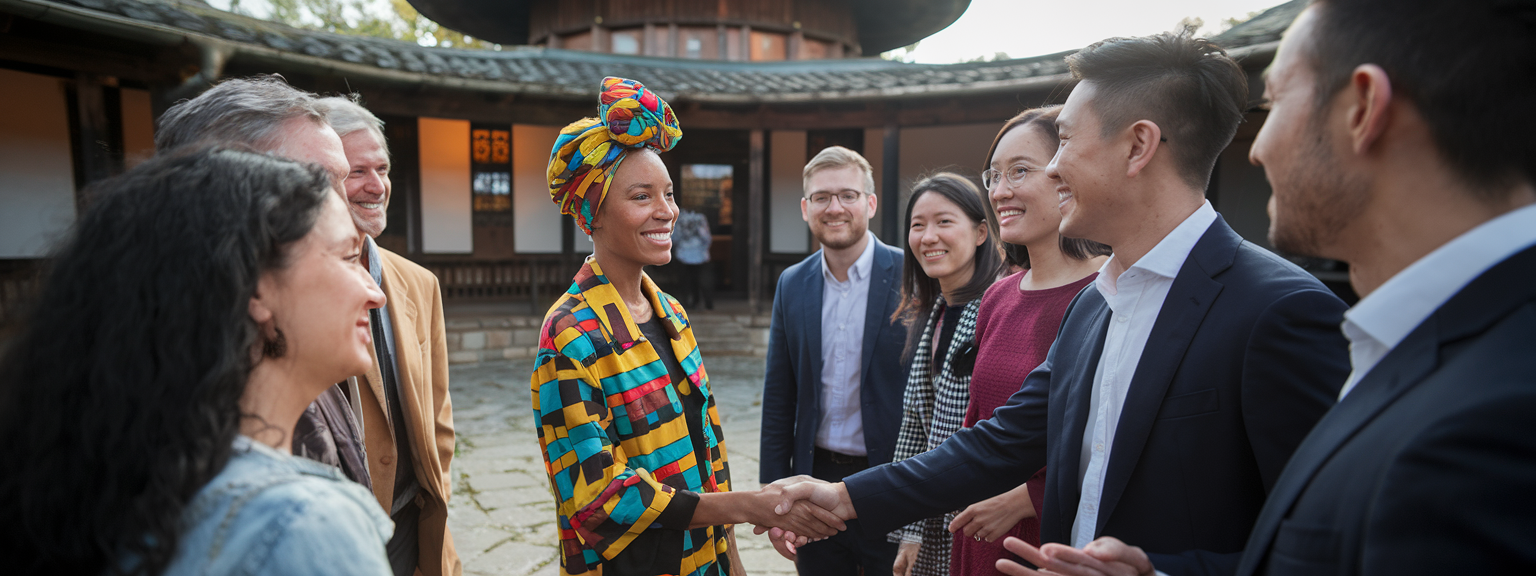Mastering Cultural Etiquette and Interaction for Global Success
In today’s interconnected world, understanding Cultural Etiquette and Interaction has become essential for travelers, entrepreneurs, and professionals seeking global success. Whether you’re conducting business abroad, studying in a new country, or traveling for leisure, the ability to navigate cross-cultural communication and international customs with grace defines your credibility and empathy. In this guide, we’ll unpack universal behaviors, explore regional nuances, and reveal the social habits that make meaningful connections possible anywhere on Earth.
📍Must-See Attractions
When it comes to experiencing Cultural Etiquette and Interaction firsthand, the world offers countless destinations where customs define the cultural rhythm. These locations embody respect, politeness, and deep-rooted tradition—offering valuable insights into how cultural norms shape daily life.
Tokyo, Japan – The Precision of Politeness
From the artful bow to the ritual of exchanging business cards, Tokyo’s culture is steeped in respect and formality. Avoid loud public behavior, remove shoes when entering homes, and accept gifts with both hands. A tea ceremony symbolizes mindfulness and humility, reflecting Japan’s cultural balance of harmony and attentiveness.
Paris, France – The Elegance of Conversation
In France, conversation is an art form. When greeting someone, a polite “Bonjour” followed by a handshake or light kiss on the cheek opens doors. Dining is a slow, social activity—cutlery use and manners are scrutinized. Mastering these small gestures ensures your cross-cultural communication remains refined and appreciated.
Dubai, UAE – Hospitality and Modesty
Dubai’s diverse society blends tradition with modernity. Show cultural sensitivity by dressing modestly, particularly in public spaces or religious sites. Accept Arabic coffee with your right hand, and be mindful of gender interactions. Respect for time, elders, and hospitality shapes the essence of Emirati etiquette.
Nairobi, Kenya – Warmth and Community
Kenyans value respectful greetings and friendly conversation. Sharing food, stories, and laughter are vital forms of connection. Whether in Nairobi’s markets or rural communities, eye contact conveys sincerity, while patience and humility earn trust across cultural boundaries.
🎭 Local Culture & Experiences
Immersing in local culture is the best way to understand how Cultural Etiquette and Interaction operates in everyday life. Festivals, food rituals, and art express a community’s deepest values, bridging emotional and social gaps among people from different backgrounds.
Festivals That Reflect Cultural Values
From India’s Diwali to Brazil’s Carnival, festivals embody humanity’s shared joy and spiritual depth. They reveal how cultural norms, music, and traditions connect individuals to collective identities. Participating with respect—dressing appropriately, learning meanings, and observing rituals—enhances your appreciation for local values.
Dining Etiquette and Shared Meals
Food tells stories of togetherness. In Thailand, never point your feet at someone while dining. In the Middle East, share meals using the right hand and accept offers graciously. Each culture’s dining style reveals an unwritten rulebook of graciousness, patience, and gratitude.
Artistic Expression as a Universal Language
Music, dance, and art transcend words. Appreciating local performances or exhibitions fosters empathy beyond language barriers. Observing how artists interpret history and identity deepens your insight into cross-cultural communication.
🔑 Hidden Gems & Insider Tips
For travelers passionate about authentic experiences, the hidden nuances of social behavior often matter more than landmarks or tours. Understanding subtle gestures, non-verbal communication, and emotional tone is key to global etiquette mastery.
Unspoken Gestures and Personal Space
Gestures convey profound meaning. A thumbs-up may be friendly in North America but rude elsewhere. In many Asian countries, silence can signify respect or contemplation rather than discomfort. Learn these nuances to prevent cultural missteps and show sensitivity to international contexts.
Observing the “Silence Factor”
In societies like Japan and Finland, silence during conversation implies attentiveness. Avoid rushing to fill pauses; instead, embrace contemplative communication. This subtle practice transforms how others perceive your respect and attentiveness.
Engage with Local Communities
Join local volunteer programs or attend traditional events. These provide immersive environments where customs are lived, not just observed. Each interaction teaches humility, offering a firsthand look into cultural awareness and the human connection it fosters.
🗓️ Sample Itinerary or Day Plan
Here’s a curated daily itinerary designed to help travelers practice Cultural Etiquette and Interaction naturally during a cultural exploration.
Morning (8:00 AM): Markets and Greetings
Visit a local morning market. Start by greeting vendors respectfully. In East Asia, a bow replaces a handshake, while in Latin America, a warm smile suffices. Enjoy traditional breakfast fare while practicing conversational etiquette.
Afternoon (12:00 PM): Cultural Immersion Workshop
Attend a cooking or art workshop that reveals the philosophies underpinning local customs. Engage with instructors and fellow participants, observing how collaboration and teamwork take on cultural meaning.
Evening (6:00 PM): Traditional Social Experience
End your day with a community dinner or a traditional music performance. Pay attention to audience behavior—when to clap, when to stay silent—and follow local cues respectfully.
💡 Travel Tips Specific to the Destination
Before traveling, mastering Cultural Etiquette and Interaction begins with preparation. These simple travel practices enhance not only your awareness but also your respect for local societies.
Packing Essentials
Dress according to local standards. In conservative regions, covering shoulders and knees shows sensitivity; in tropical communities, bright colors symbolize friendliness. Adapting your attire conveys humility and unity with local traditions.
Greetings and Respect
Learn a few polite phrases in the local language—simple words like “thank you” and “please” establish goodwill immediately. Acknowledging elders first or greeting people in their cultural manner builds trust.
Safety and Awareness
Every nation has its unique laws and customs. Respect them. Behavior seen as casual back home may appear inappropriate elsewhere. Awareness ensures safety and avoids misunderstanding.
Timing and Festivals
Timing your trip with local festivals maximizes immersion opportunities. Participate respectfully and witness values that define entire communities.
Bringing It All Together
In mastering Cultural Etiquette and Interaction, you learn not just to observe differences but to celebrate them. From understanding gestures to embracing festivals, every experience broadens your worldview and enriches your personal growth.
True cultural sensitivity stems from curiosity and respect. Every handshake, every meal, every conversation becomes an opportunity to connect with the soulful diversity of humanity. Embrace each interaction as a learner and observer, and you’ll carry home not just memories—but wisdom that transcends borders.


![[Houston International Food Platter] [Vibrant platter of global dishes showcasing Houston international food]](https://roamwriters.com/wp-content/uploads/2025/11/houston-international-food-bold-flavors.png)
![[Cultural Etiquette International Meeting] [Colleagues exchanging greetings in an international office demonstrating Cultural Etiquette]](https://roamwriters.com/wp-content/uploads/2025/11/cultural-etiquette-international-meeting.png)

![[Travel Emergencies Response] [Traveler checking documents and phone for help after travel emergencies]](https://roamwriters.com/wp-content/uploads/2025/11/travel-emergencies-preparation-guide.png)